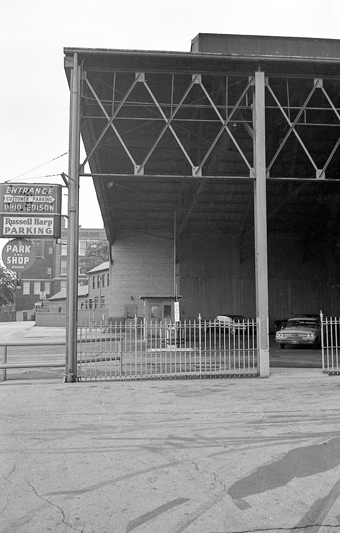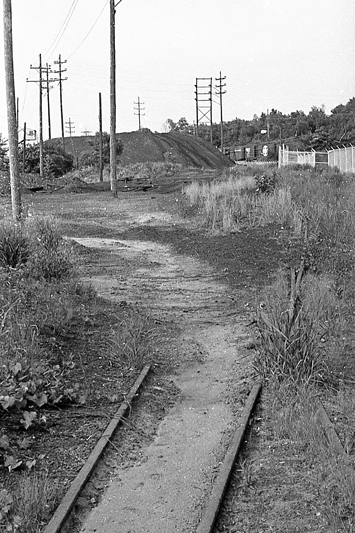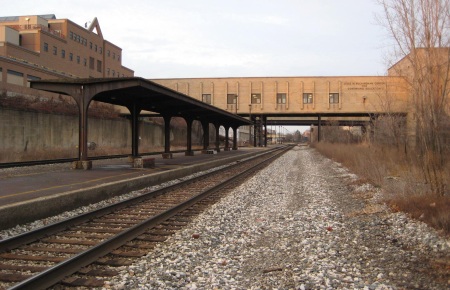
An archival photo of the trains shed at Akron Terminal when it was still served by interurban railway cars. (Photo courtesy of Alex Bruchac)
The century old train shed at the former interurban railway terminal in downtown Akron will be razed to make way for the new headquarters of a specialty tire company.
The shed was the boarding area for interurban cars of the Northern Ohio Traction & Light Company that fanned out from Akron to Cleveland, Canton, Massillon, New Philadelphia, Uhrichville, Wadsworth, Alliance and Warren as well as points in between.
The shed and two adjacent structures will fall to make way for the headquarters of Smithers, which is bringing 200 jobs, many of them high paying, to downtown Akron.
Smithers will establish on the location a 25,000-square foot research and development center that will wrap around the adjacent former Akron Terminal building.
It must be built and opened within three years of the closing date of the deal that is bringing the new headquarters to downtown Akron.
The two upper floors of the former NOTLC terminal building adjacent to the shed will be used as the Smithers global headquarters.
The train shed, which in recent years has been used as a parking lot and, on occasion, for beer festivals, dance performances, art displays and fashion shows, must go.
A city official said the shed does not lend itself to reuse or redevelopment.
The shed and its station were built in 1918 at a cost of $800,000 at the intersection of North Main and Federal streets. The latter was later renamed Perkins and now is known as Martin Luther King Jr. Boulevard.
The four-story terminal building of white granite was designed by Cleveland architect Franz C. Warner.
The train shed was built of structural steel over an area measuring 161 feet by 230 feet.
The shed held eight tracks and could hold 24 cars at one time. In its glory years in the early 20th century, an average of 32 interurban cars per hour would come and go at the shed to and from NOTLC’s 300-mile network.
Trains arrived at Akron Terminal from the south by running down Main Street and entering the shed through an alley.
Cars departed northward onto Federal Street and then turned onto Main Street.
To board a car, a passenger walked out of the waiting room through a tunnel before climbing stairs to the boarding platforms.
To avoid crowding on the platforms and passengers boarding the wrong cars, passengers had to show their tickets to a gate agent before being admitted to the boarding area.
The tracks were dedicated to specific routes. For example, Track 4 was for Cleveland-bound locals while Track 5 was used by Cleveland-bound limited.
At time of its completion, Akron Terminal was billed as one of the largest and finest electric railway terminals in the nation.
In 1932 the tracks were paved over for use by buses. Greyhound used the facility for a time before moving to a new terminal in 1948 on South Broadway that was linked by a concourse with the new Akron Union Depot.
The station building has been used as offices by various companies and public agencies, including Ohio Edison, a successor company of NOTLC.
The Summit County Welfare Department, now known as Summit County Job & Family Services, had offices at the former Akron Terminal for 40 years until moving in 2016 to the Triangle Building on South Main Street.
The Austen BioInnovation Institute moved into the building in 2012 but has since moved out.
The former Akron Terminal is owned by the Summit County Development Finance Authority and the Smithers headquarters move is part of a $16.9 million public-private project.
Smithers, which was founded in 1925, will begin moving employee into the new headquarters facility in the middle of 2020 after renovations to the office space in the former Akron Terminal are completed.











